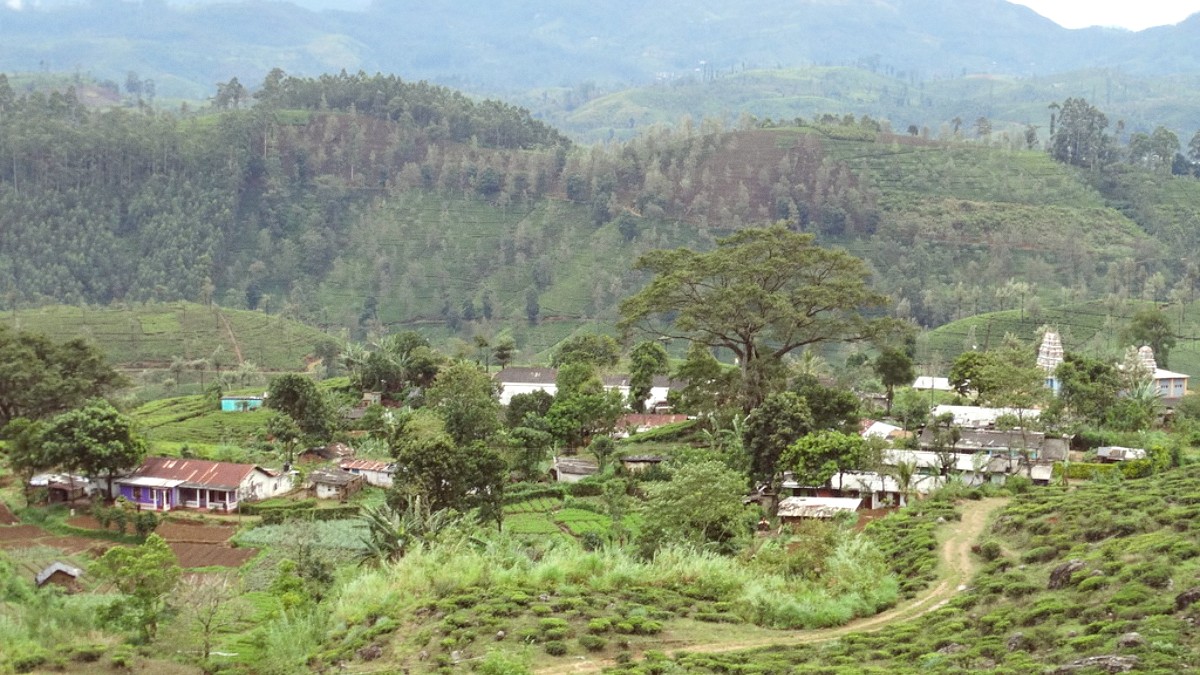
The Hill Country, Sri Lanka
Sri Lankan cuisine is heavily influenced by its position on ancient maritime trade routes. This created a fusion of flavors from Indian, Middle Eastern, Malay, and European (Portuguese, Dutch, British) cooking traditions. Spices remain central to nearly every dish, with cinnamon, cardamom, cloves, and curry leaves ever-present.
Coconut milk is a staple for creating rich, creamy gravies. Rice forms the main staple, served with a variety of curries. The island's geography also has a part, with abundant fresh seafood on coasts and a bounty of vegetables and fruits inland.
Known for fresh seafood and the use of "Goraka" for its distinct sourness in fish curries. Dishes here often have more tangy notes.
This region emphasizes robust curries, including a wide array of vegetable-based dishes. The use of locally grown ingredients, especially those from the cool climate, is prominent.
Features a distinctive, often spicier cuisine with stronger Indian (Tamil) influences. Unique crab curries and specialized Jaffna curry powder distinguish northern dishes.
The national dish. A large portion of rice with 3-6 different vegetable, meat (chicken, fish), or lentil (dhal) curries. Often with sambols and papadam.
Widely available at local eateries and guesthouses.
Chopped godamba roti stir-fried with vegetables, eggs, and/or meat, mixed with spices. Preparation involves noisy chopping.
A popular street food, especially for dinner.
Bowl-shaped pancakes from fermented rice flour and coconut milk, with crispy edges and a soft center. Plain or with an egg (Egg Hopper).
Eaten for breakfast or dinner.
Buffalo curd, similar to yogurt, served with golden kithul (palm) treacle. A classic, refreshing dessert.
General term for savory snacks like fish buns, vegetable roti, spring rolls, and pastries. Bakeries sell these, perfect for a quick bite.
Fine dining options are limited within Ella town itself. Upscale hotels and boutique resorts slightly outside the main town, like 98 Acres Resort & Spa or The Secret Ella, typically feature more refined Sri Lankan cuisine and international dishes in a more formal setting.
Ella's main street has an abundance of mid-range restaurants popular with tourists. They often feature a mix of Sri Lankan dishes, like curries and kottu, and Western favorites, like pizza, pasta, and burgers.
Numerous small local eateries, sometimes called 'rice and curry shops,' have authentic and inexpensive Sri Lankan meals. They bring the best value and a true taste of local cuisine.
Sri Lankan cuisine is inherently vegetarian-friendly due to abundant vegetable and lentil (dhal) curries. Many locals are vegetarian or consume less meat. Vegan options are also widely available.
Coconut milk is a staple, and many dishes are without dairy or animal products. For strict veganism, specify 'no egg'.
Many chicken and beef suppliers are halal-certified due to the Muslim population in Sri Lanka. Ask specifically at restaurants if meat is halal.
Kosher food is generally not available outside of major international hotels in Colombo. Travelers needing kosher food should plan to bring their own or adhere to vegetarian options.
Pizza and pasta are popular choices.
American-style burgers and fries are common.
Some places may have Chinese or other Asian dishes.
Most mid-range restaurants in Ella have a selection of international dishes.
Staying in a local homestay or guesthouse run by a Sri Lankan family has a direct community experience.
Informal learning occurs through interaction with locals.
Rice and curry is naturally gluten-free. Roti and hoppers are made from rice flour, so they are generally gluten-free, but cross-contamination can be a concern.
Communicate clearly with guesthouse owners. They often prepare fresh meals and can easily accommodate specific requests, especially if informed in advance.
Ella's dining scene brings cultural depth through its flavors and traditions.
Explore local markets for fresh produce and spices, getting a true taste of local life.
Try a cooking class for hands-on learning of Sri Lankan dishes, often including a market visit.
Communicate clearly with guesthouse owners. They often prepare fresh meals and specific requests, especially if informed in advance.